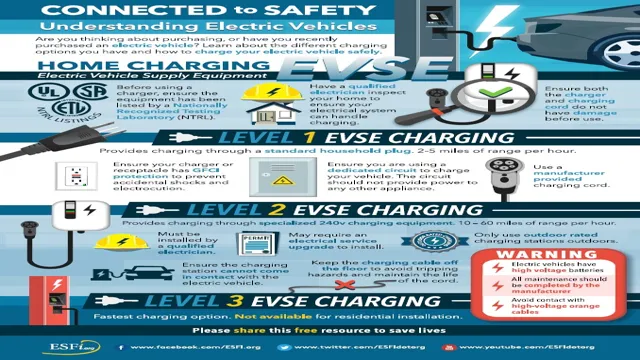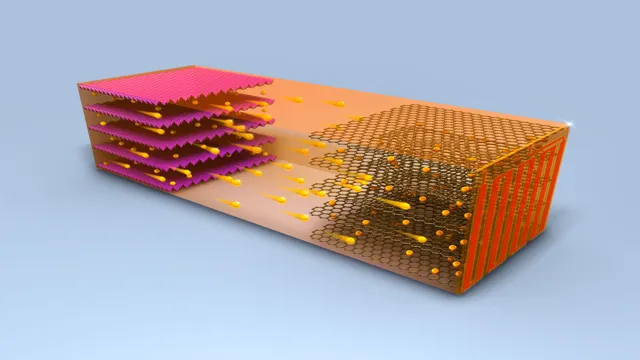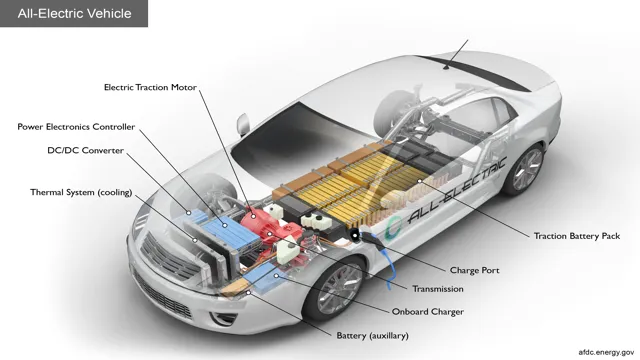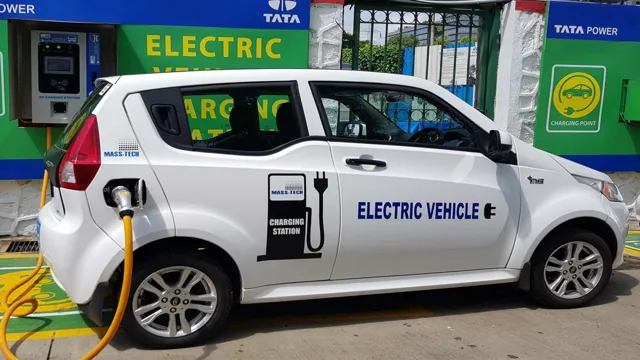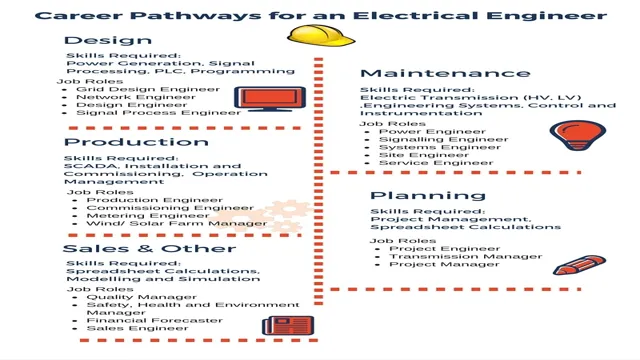Unveiling the Technology Behind Electric Cars: A Comprehensive Guide.
Electric cars have been around for a while now, and they are becoming increasingly popular. With the push for sustainable and eco-friendly transportation, electric cars are becoming an ideal choice for many people. One of the reasons behind their popularity is the advanced technologies that come with them.
From battery technology to charging infrastructure, electric cars boast cutting-edge technologies that enhance their efficiency and convenience. In this blog post, we will take a closer look at some of the key technologies in electric cars and explore how they are making the switch to electric vehicles more feasible and compelling. So, whether you are a hardcore environmentalist or a tech enthusiast, stick around to learn more about the exciting world of electric cars and their advanced technologies.
Battery Technology
When we talk about electric cars, battery technology is arguably the most important aspect that needs to be discussed. There are a variety of different technologies that are being used in the batteries of electric cars today, including both lithium-ion and nickel-metal hydride. Lithium-ion batteries are currently the most popular choice and are being used in a majority of electric car models.
They are lightweight, have a high energy density and a long lifespan. Nickel-metal hydride, on the other hand, are a slightly older technology but are still being used in some electric cars. They are heavier and have a lower energy density, but they are also less expensive and have a longer lifespan than lithium-ion batteries.
Other battery technologies that are being developed for electric cars include solid-state batteries and flow batteries. These technologies are still in the research and development phase, but they have the potential to offer even greater energy density and longer lifespan than current battery technologies. Overall, battery technology is a rapidly evolving field, and the future of electric car batteries is bright.
Lithium-ion Batteries
Lithium-ion batteries have become one of the most popular types of rechargeable batteries in recent years due to their high energy density and longer lifespan compared to other battery technologies. These batteries are commonly used in portable electronic devices, electric vehicles, and even in power grids to store solar and wind energy. One of the most significant advantages of lithium-ion batteries is their ability to deliver high power output and maintain it consistently.
This makes them an ideal choice for high-performance applications such as electric vehicles and power tools. It’s also worth mentioning that lithium-ion batteries are lightweight and compact, making them easy to handle and transport. Despite their benefits, lithium-ion batteries have some drawbacks.
They are sensitive to changes in temperature, which can affect their performance and lifespan. Additionally, they can be expensive and challenging to dispose of. However, as the demand for clean energy solutions continues to grow, lithium-ion batteries are expected to play a significant role in the future of renewable energy.
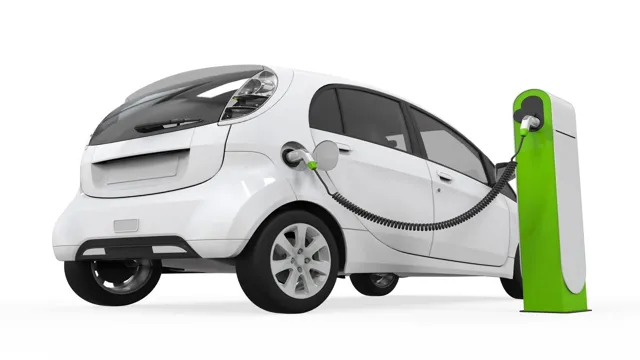
Solid-state Batteries
Battery technology is advancing rapidly, and solid-state batteries are becoming a hot topic in the world of energy storage. Unlike traditional lithium-ion batteries, solid-state batteries use a solid electrolyte instead of the traditional liquid electrolyte. This makes them safer, more reliable, and potentially more cost-effective than their liquid counterpart.
In addition, solid-state batteries offer a higher energy density, meaning they can store more energy in a smaller space. This makes them an attractive option for electric vehicles and other mobile devices where size and weight are important factors. With continued research and development, solid-state batteries have the potential to revolutionize the energy storage industry and become a game-changer for our reliance on fossil fuels.
Electric Motor Technology
When it comes to electric cars, there are multiple technologies that need to be described in order to really understand how they work. One of the most important is the electric motor technology that powers the car. Unlike traditional combustion engines, electric motors rely on electricity to spin the motor, which in turn powers the wheels of the car.
There are several types of electric motor technologies, but the most common are AC induction and Permanent Magnet motors. AC induction motors are generally less expensive to produce and are more efficient at high speeds, whereas Permanent Magnet motors are smaller and lighter, making them ideal for smaller cars or situations where weight is an issue. Regardless of the specific technology used, the electric motor is the heart of any electric car and is what makes them unique and efficient.
AC Motors
AC motors, electric motor technology AC motors, or alternating current motors, are essential components in many electrical systems. These motors use electromagnetic induction to rotate a shaft and typically require less maintenance than their DC motor counterparts. AC motors are used in a variety of applications, ranging from electric cars to HVAC systems.
One significant advantage of AC motors is their compatibility with variable frequency drives (VFDs), which enable precise speed control. By adjusting the frequency of the electrical supply, the speed of the motor can be easily regulated to meet the specific needs of the application. When choosing an AC motor, it’s essential to consider factors such as power requirements, speed, and torque.
Understanding the basics of electric motor technology and its applications can help individuals make informed decisions and ensure optimal performance.
DC Motors
DC motors are a type of electric motor that is commonly used in a variety of applications. They operate on the principle of electromagnetism, where a magnetic field is created in the motor’s internal components, causing it to rotate. Unlike AC motors, DC motors are powered by direct current, making them more efficient and durable.
DC motors come in various sizes and types, each suited for different uses, from small motors for household appliances to large motors for industrial machinery. They provide a reliable and precise solution for controlling speed and torque, making them ideal for robotics, automation, and other precision applications. Overall, DC motors are an essential technology in the modern world, powering everything from toys to trains to wind turbines.
Power Electronics Technology
When it comes to electric cars, there are several power electronics technologies that need to be described and understood. One of the most important is the electric motor controller, which manages the flow of electricity from the battery pack to the electric motor. This controller needs to be highly efficient in order to maximize the car’s range.
Additionally, electric cars use regenerative braking technology, which converts the kinetic energy of the car back into electrical energy that can be stored in the battery. Other important power electronics technologies include the battery management system, which monitors and controls the health of the battery pack, and the DC-DC converter, which converts high-voltage DC power from the battery to lower voltage DC power for accessories like lights and air conditioning. By understanding these power electronics technologies, drivers of electric cars can better understand how their cars work and how to maximize their performance and efficiency.
Inverter Technology
Inverter technology is a game-changer in the world of power electronics. This innovative technology converts DC (direct current) to AC (alternating current) and vice versa, allowing devices to run on different voltages and frequencies with great efficiency. Inverter technology has revolutionized the way we use electronic devices, from power tools to refrigerators to air conditioners, by making them more energy-efficient and silently operating.
This technology has a wide range of applications, including renewable energy, automotive, aerospace, and marine industries. Moreover, inverter technology has significantly reduced the impact of electronic devices on the environment. With this technology, we can conserve energy and reduce carbon emissions.
Inverter technology is indeed a brilliant innovation that has transformed the world of power electronics.
Charging Technology
Power electronics technology plays a crucial role in charging technology. It allows for the efficient conversion of electrical power to the desired voltage and current for charging devices. Power electronics technology enables fast charging, ensuring that devices charge quickly without being damaged.
It also helps to reduce energy consumption and increase charging efficiency. This technology is used in various charging devices such as smartphones, laptops, electric vehicles, and renewable energy systems. It also contributes significantly to the development of wireless charging systems.
Without power electronics technology, charging would be much slower, less efficient, and more energy-consuming. So, the next time you’re quickly charging your phone or electric car, you can thank power electronics technology for making it possible.
Software and Connectivity Technology
When it comes to electric cars, there are a plethora of software and connectivity technologies that need to be discussed. Firstly, the battery management system (BMS), responsible for monitoring the battery’s state of charge, health, and temperature, is essential to maintain the longevity and safety of the battery. Additionally, the electric motor controller regulates the motor’s power and torque output, ensuring optimal performance and efficiency.
Software updates, commonly delivered over-the-air, provide the car with the latest features, bug fixes, and security patches. Connectivity technology, such as GPS navigation, streaming music, and vehicle-to-everything (V2X) communication capability, enhances the driver’s experience and safety. It’s crucial to consider cybersecurity measures to prevent theft and unauthorized access to the car and its data.
Finally, charging infrastructure, such as apps that provide real-time charging station availability and payment, plays a significant role in the adoption of electric cars. Overall, these technologies show how electric cars have evolved into complex and sophisticated machines, providing an eco-friendly and innovative alternative to conventional gas-powered vehicles.
Telematics
Telematics is a technology that allows the transmission of vehicle data through wireless communication and software programs. It is designed to help drivers, fleet managers, and insurance companies make better decisions by providing information such as vehicle location, driving behavior, fuel consumption, maintenance, and safety alerts. Telematics is a game-changer for the auto industry, as it provides real-time data that can be used to improve vehicle efficiency, reduce costs, and enhance safety on the road.
With telematics, drivers can monitor their driving habits and receive personalized feedback on how to improve, while fleet managers can optimize routes, monitor fuel consumption, and identify opportunities for operational efficiencies. Insurance companies can also use telematics data to calculate premiums based on a driver’s behavior or offer incentives for safe driving. Overall, telematics is a powerful tool that is changing the way we think about cars, driving, and safety.
Autonomous Driving Technology
Autonomous driving technology has seen significant advancements in recent years, thanks to the development of sophisticated software and connectivity technologies. These advancements have paved the way for a future where cars can safely operate without human input, allowing for enhanced safety, reduced traffic congestion, and improved mobility. Advanced software and connectivity technologies, such as machine learning algorithms and edge computing, have made it possible for autonomous vehicles to process vast amounts of data in real-time, making navigational decisions based on factors such as the driving environment, road conditions, and traffic patterns.
These technologies also allow autonomous vehicles to communicate with one another, and with traffic management centers, making it possible for them to coordinate their movements and optimize their routes. With these advancements and developments, we can expect to see more sophisticated autonomous driving technology in use, ultimately driving us towards a safer, more efficient, and more connected future.
Conclusion
In conclusion, when it comes to electric cars, there are several key technologies that need to be understood. These include the battery, motor, and charging systems, as well as the overall architecture and design of the vehicle. But don’t be fooled – it’s not just about the technical specs.
The key to truly appreciating electric cars is in understanding their impact on the environment, our communities, and our daily lives. So, let’s charge on and ride into the future with a deep appreciation for the technologies powering our electric vehicles!”
FAQs
What is regenerative braking and how does it work in electric cars?
Regenerative braking is a technology used in electric cars that harnesses the energy from the braking process and stores it back into the battery. As the brakes are applied, the electric motor acts as a generator, converting the kinetic energy of the car into electrical energy.
How do electric cars differ from traditional gasoline-powered cars?
Electric cars use an electric motor powered by a rechargeable battery pack, while traditional cars use an internal combustion engine powered by gasoline. Electric cars are also more energy-efficient and produce zero emissions.
What is the range of an average electric car and how can it be improved?
The range of an average electric car is around 100-200 miles on a single charge, but can vary depending on the specific car model and driving conditions. The range can be improved by advancements in battery technology and infrastructure, such as more charging stations and faster charging times.
What is the lifespan of an electric car battery and how much does it cost to replace?
The lifespan of an electric car battery can vary from 8 to 15 years, depending on the manufacturer and usage. Replacement costs can range from $3,000 to $8,000, but prices are expected to decrease as battery technology improves.

